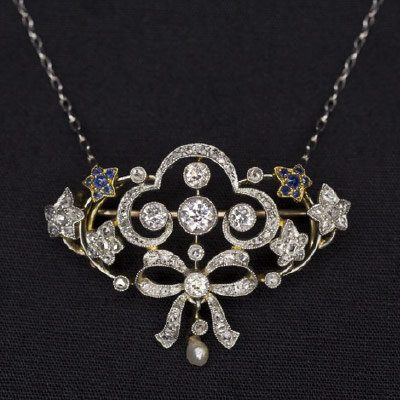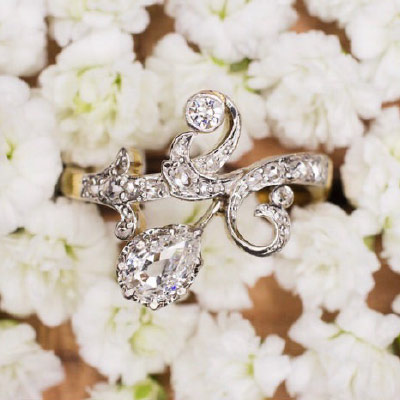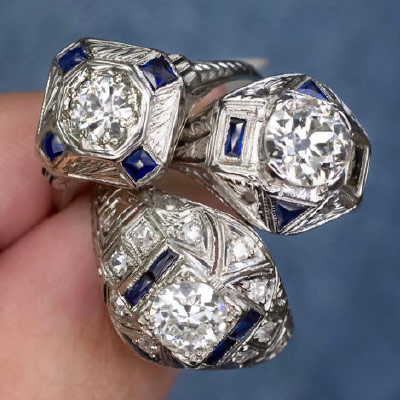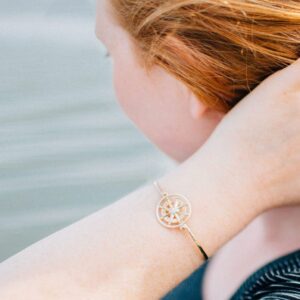

Discover Timeless Treasures At Our Estate Jewelry Event in March 14th and 15th, 2025

We are thrilled to welcome back an Estate Jewelry professional for 2 days in March 2025, with her collections of Victorian, Art Deco, Contemporary and more period jewelry. Exotic gems and signed pieces will also be part of this visit. Save the date to see these completely unique treasures!
Estate Jewelry Event Appointment Form
Use the form below to schedule your appointment for the Estate Jewelry Event
A Timeline of Jewelry Design Eras from
the Georgian Era to Present:

Georgian Era (1714-1837)
- Early Georgian (Georgian Baroque) Period (1714-1760): Jewelry featured intricate metalwork, with designs inspired by nature, including flowers, leaves, and animals. Gemstones like diamonds, pearls, and colored gemstones were commonly used.
- Mid-Georgian (Georgian Rococo) Period (1760-1780): Jewelry designs became more ornate, incorporating motifs like ribbons, bows, and scrolls. Paste stones and foiled gemstones were popular due to advancements in glass technology.
- Late Georgian (Neoclassical) Period (1780-1837): Jewelry was influenced by the Neoclassical movement, featuring designs inspired by ancient Greece and Rome. Cameos, intaglios, and classical motifs like laurel wreaths and acanthus leaves were common.




Victorian Era (1837-1901)
- Early Victorian (Romantic) Period (1837-1860): Jewelry embraced sentimental and symbolic motifs, such as hearts, flowers, and bows, often set with gemstones and pearls.
- Mid-Victorian (Grand) Period (1860-1885): Jewelry designs became more elaborate and incorporated darker gemstones like garnets and amethysts. Mourning jewelry gained popularity.
- Late Victorian (Aesthetic) Period (1885-1901): Jewelry embraced naturalistic designs inspired by Japan and the Arts and Crafts movement. Motifs included birds, insects, and oriental themes.


Edwardian Era (1901-1915):
- Edwardian jewelry was characterized by elegance, femininity, and the use of platinum. Designs featured intricate lace-like patterns, delicate filigree, and motifs like bows, ribbons, and garlands. Diamonds were the predominant gemstone.



Art Nouveau (1890-1910)
Art Nouveau jewelry broke away from the formal styles of the past and embraced sinuous lines, organic forms, and nature-inspired motifs like flowers, dragonflies, and flowing hair. René Lalique and Georges Fouquet were prominent designers of this era.



Art Deco (1920-1935)
Art Deco jewelry showcased geometric patterns, bold colors, and a sleek, streamlined aesthetic. Influence was drawn from Cubism, Egyptology, and industrial design. Diamonds, emeralds, rubies, and sapphires were frequently used, often in combination with black onyx or coral.


Retro (1935-1950)


Mid-Century Modern (1950-1970)
Mid-Century Modern jewelry embraced clean lines, minimalism, and abstraction.Designs were influenced by architectural and industrial elements, and materials like silver and stainless steel gained popularity. Gemstones were often used sparingly, if at all.



Contemporary and Modern Era (1970-Present)
Local Shopping Experience
Our business was founded over 55 years ago and still stands in its original location, just a block from L.L. Bean. Our showroom is full of jewelry we have designed and created ourselves and collections from jewelers we deeply trust and admire.
Cleaning & Repairs
Take this opportunity to fix and clean your jewelry. We are one of the few jewelry stores in Maine to fulfill all types of jewelry repairs on our premises. From ring sizing to chain repair, we can help you make your jewelry wearable and comfortable again.
Jewelry Care Plan
Taking care of your jewelry goes a long way in maintaining its value with your changing lifestyle. We offer a jewelry care plan for every Engagement Ring in our store. This small initial investment added to your ring purchase is worth a lifetime of care.





